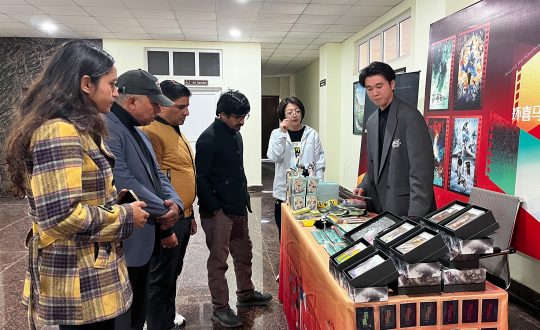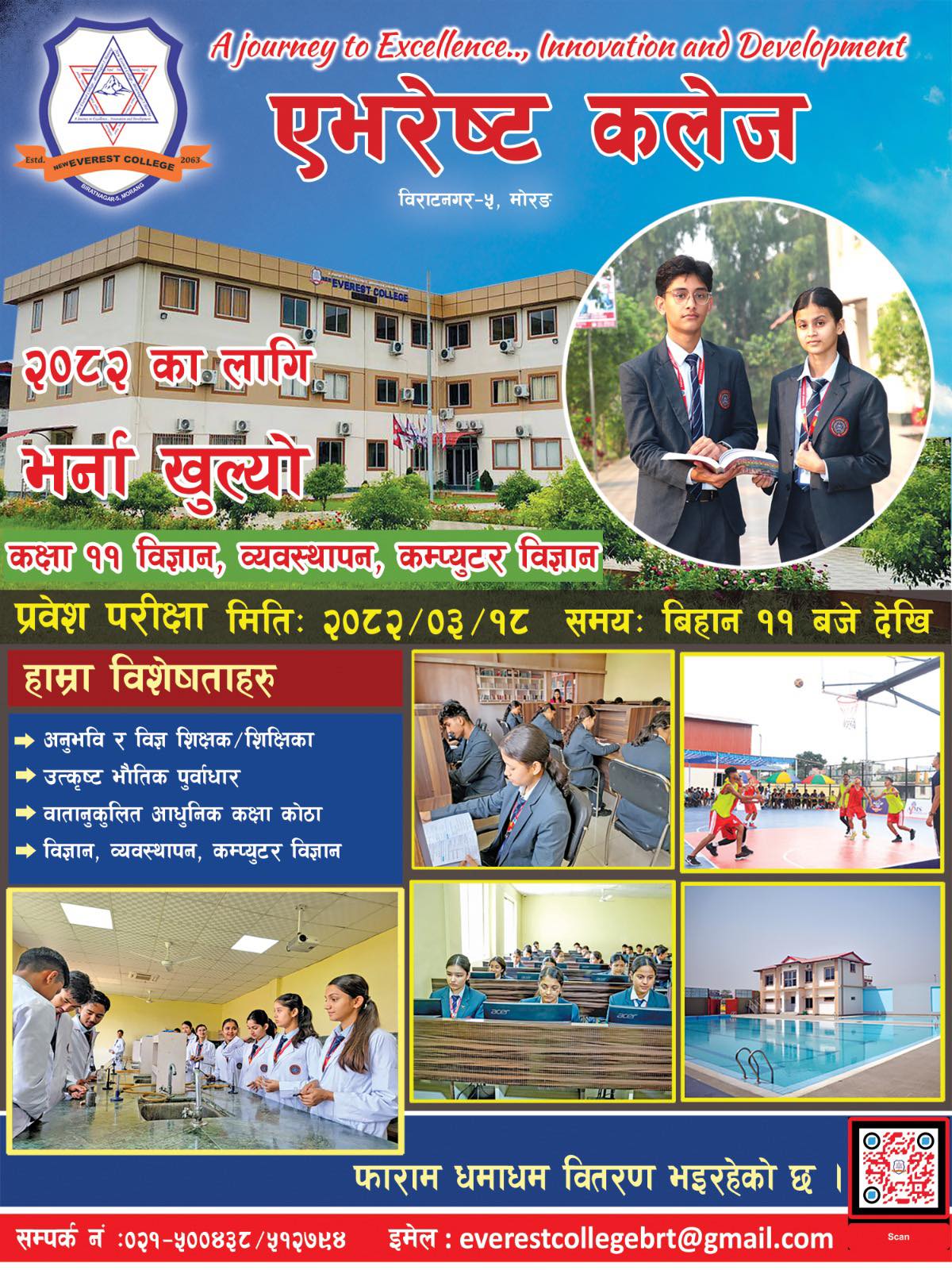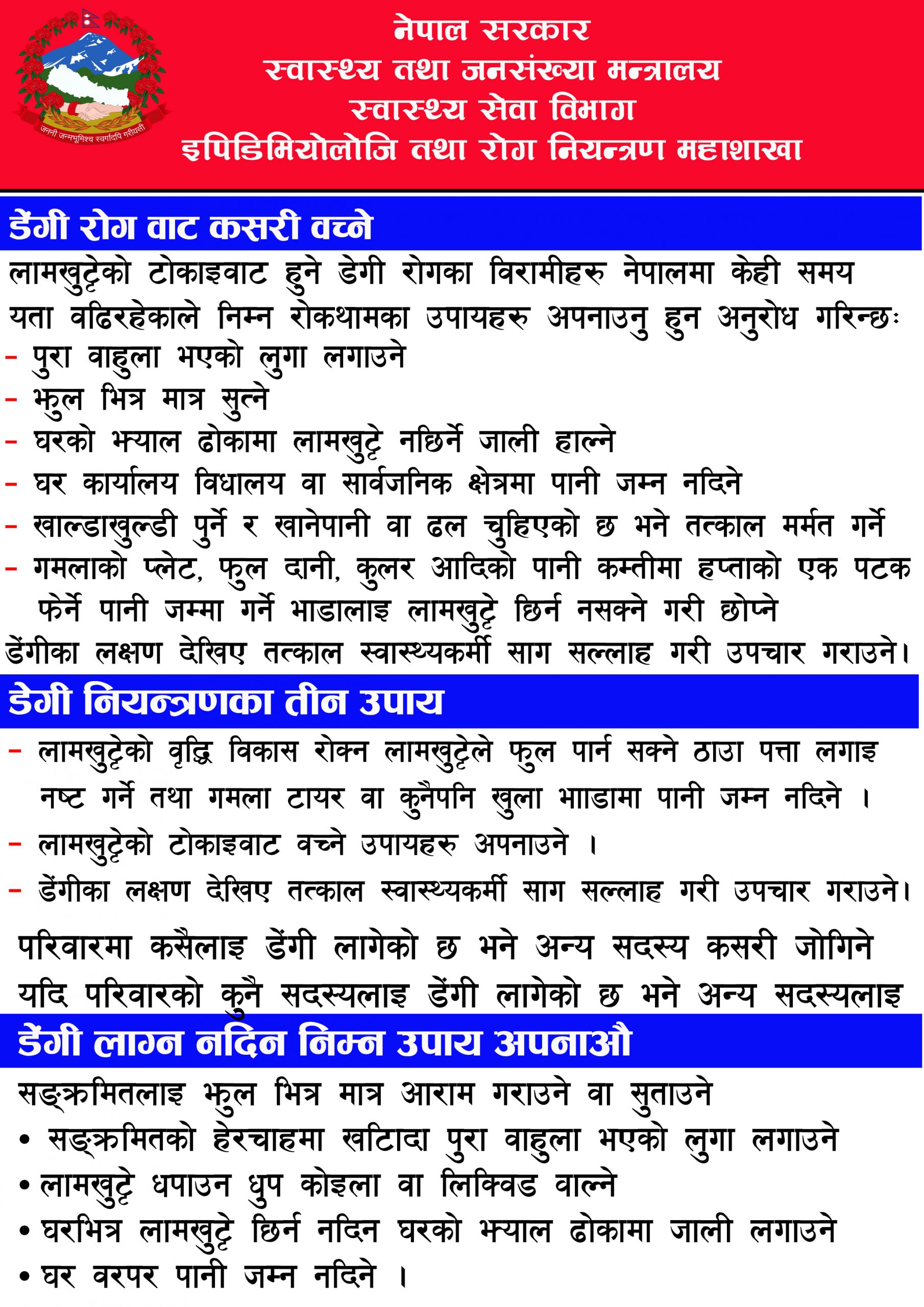Princess Bhrikuti’s Marriage to Songtsen Gampo Marked a New Era in China-Nepal Relations: Luo Jun
काठमाडाैं । नेपाल-चीन कूटनीतिक सम्बन्ध स्थापनाको ७० वर्ष पुगेको अवसरमा काठमाडौँमा ‘सिजाङ सांस्कृतिक सप्ताह’ शुरु भएको छ । तिब्बत मिडिया ग्रुपको आयोजनामा आयोजित विशेष समारोहमा सिजाङ (तिब्बत) अन्तर्राष्ट्रिय सांस्कृतिक संघका उपाध्यक्ष लो च्युनले दिएको मन्तव्यको पूर्णपाठः
Your Excellency Bimala Ghimire, Vice Chairperson of the National Assembly of Nepal,
Your Excellency Mr. Chen Song, Ambassador Extraordinary and Plenipotentiary of the People’s Republic of China to Nepal
Distinguished guests, ladies and gentlemen, friends:
Namaste, everyone!
China and Nepal, linked by the same snow mountains, are good neighbors, good friends and good partners. Today, we gather here in Kathmandu, the capital of Nepal nestled at the southern foot of the Himalayas, to witness the grand opening of the “70 Years of China-Nepal Friendship: Advancing Together – the First ‘China’s Xizang Connections · Culture Week'”.
On behalf of the China Xizang Delegation and Xizang International Culture Association of China, I would like to extend my sincere gratitude and warmest welcome to Ambassador Chen Song, Vice Chairperson Bimala Ghimire, friends from all walks of life in Nepal, and distinguished personalities who have long cared for and supported China-Nepal friendship as well as the development of China’s Xizang!
China and Nepal are linked by mountains and rivers, with a friendship that has endured for millennia.
Looking back through time, there are countless heartwarming tales of cultural exchanges between our two countries.
Over 1,600 years ago, Chinese eminent monk Faxian and the Nepalese eminent monk Buddhabhadra visited each other and translated Buddhist scriptures, opening a new chapter in cultural exchanges.
During the Tang Dynasty in China, Princess Bhrikuti of Nepal was married to Tubo ruler Songtsen Gampo.
Xuanzang traveled to Lumbini and left behind precious written records.
In the Yuan Dynasty of China, the renowned Nepali craftsman Arniko led a team of artisans to China, where he designed and built the White Dagoba of Miao-ying Temple in Beijing, and his exquisite craftsmanship still amazes people to this day.
In China’s Xizang, one can also feel the cultural exchanges between China and Nepal.
For example, the Chagyima Hall, initially built in the Yuan Dynasty and located in Leiwuqi County, Qamdo City, specially invited Nepalese craftsmen to participate in its construction.
As a result, it became a grand architectural masterpiece blending Tibetan, Han, and Nepalese styles.
The Samye Monastery in Zha-nang County, Shannan City, features murals that integrate Nepalese and Han-Tang artistic styles, vividly showcasing the unique charm of multicultural integration.
These examples are just the tip of the iceberg, all of which underscore the close cultural ties and friendly exchanges between China and Nepal throughout history, bearing witness to the long-standing and profound friendship between the two countries.
China and Nepal officially established diplomatic relations in 1955, opening a new chapter of friendly exchanges.
Over the past 70 years, from the summit of Mount Qomolangma to the banks of the Bagmati River, from the ancient Tea-Horse Road to modern ports, touching stories of “ever-deepening friendship despite high mountains and long rivers” have been written everywhere.
Today, taking the “70th Anniversary of China-Nepal Diplomatic Relations” as an opportunity, we host the First “China’s Xizang Connections · Culture Week” to further deepen the China-Nepal friendship that spans the Himalayas, intensify cultural exchanges between China’s Xizang and Nepal, as well as enhance friendship and cooperation between China’s Xizang and Nepal.
The First “China’s Xizang Connections · Culture Week” kicks off today. There will be a dazzling array of cultural and artistic performances, intellectual exchanges among experts and scholars, an exhibition of images showcasing China’s Xizang, and continuous attention from major media outlets.
It is believed that through this series of activities, everyone can experience the unique charm of Chinese culture in an all-round way.
Distinguished guests, friends!
Tibetan culture is a brilliant and splendid part of the rich and colorful Chinese culture. China’s Xizang serves as a front-line window for interactions, cultural exchanges, and emotional integration between the Chinese and Nepalese peoples. For thousands of years, the chants of Tibetan Buddhism have harmonized with the exquisite Thangka art of Nepal, while the camel bells along the Ancient Tea-Horse Road have echoed alongside the footsteps of Nepalese caravans, co-existing in a symbiotic relationship.
Today, as we launch the “China Xizang Culture Week”, our aim is not only to showcase the magnificent scenery, profound cultural heritage, and development of the snow-covered plateau.
More importantly, we want to enable our Nepalese friends to experience a new socialist modern Xizang featuring prosperous, progressive, thriving, confident, and open.
Today, China’s Xizang is a place where tradition and modernity blend seamlessly.
From the golden roofs of the Potala Palace to the “Fuxing” bullet trains speeding through the canyons, from the prayer wheels in ancient temples that have spun for a thousand years to the 5G signals emitted from the summit of Mount Qomolangma,
Xizang is safeguarding the roots of its traditional culture while embracing the world with an open-minded attitude.
Today, China’s Xizang witnesses a harmonious coexistence of ecology and civilization. From the crystal-clear waters and azure(आजः) skies at the sources of the three major rivers to the herds of Tibetan antelopes roaming across the Qiang-tang Grassland, Xizang shoulders the responsibility of building itself into a high-ground for national and even global ecological civilization.
It is interpreting to the world the Eastern wisdom that “lucid waters and lush mountains are invaluable assets, and so are ice and snow” through its concrete actions.
Today, China’s Xizang is a land of unity and progress.
Here, people from all ethnic groups interact, communicate, and integrate with one another.
They strive together in unity, work towards common prosperity and development.
In 2024, Xizang achieved a Gross Domestic Product (GDP) of 276.494 billion yuan, and the per-capita disposable income of all residents reached 31,358 yuan.
People from all ethnic groups are marching hand in hand on the path towards common prosperity.
Today, China’s Xizang is confident, open, and inclusive.
As a crucial frontier for China’s opening-up to South Asia, it integrates into the global economic landscape with an inclusive mindset that embraces all rivers and streams.
In 2024, Xizang engaged in trade with 140 countries or regions around the world. Its total import and export volume of goods trade throughout the year exceeded 12.672 billion yuan.
Notably, Nepal has consistently been one of the most important trading partners of China’s Xizang.
In 2024, the bilateral trade volume reached 5.117 billion yuan, a remarkable 84.8 percent increase compared to 2023, accounting for 40.4 percent of Xizang’s total import and export volume.
From the logistics trucks at the Zhangmu Port to Tibetan-style commodities in Kathmandu, from the digital Silk Road of cross-border e-commerce to the lively scenes of border trade markets, every set of data in China-Nepal trade serves as a vivid footnote to the two countries’ commitment that “mountains and seas cannot keep us apart as we join hands towards the future”.
It is also a clear testament to Xizang’s open-minded embrace of the world.
Today, China’s Xizang is not only a vital conservation area for the distinctive culture of the Chinese nation, but also a significant world-class tourist destination.
Xizang is located at the “Third Pole of the Earth”, where glaciers dance alongside canyons, lakes embrace snow-capped mountains.
From the snow-line of the Nianqing–Tanggula Mountains to the star-studded wilderness of northern Xiznag’s Qiang-tang Grassland, from the fragrant peach blossom paradise in Nying-chi to the magnificent Zha-da Earth Forest in Ngari, every inch of the land narrates the wonders of nature’s masterful craftsmanship. Xizang is also a “living museum” where the river of civilization flows vigorously.
The cultural relics in the Potala Palace recount a thousand-year epic, the scriptures in the Sakya Monastery radiate the light of wisdom.
Nowadays, traditional Tibetan costumes mingle with modern fashion in the sunshine of the Barkhor Street in Lhasa, while the aroma of highland barley wine blends with the rich flavor of coffee in the homestays by the Lhasa River.
The ancient and the mordernity collide here, creating a unique cultural rhythm.
In 2024, China’s Xizang, with its allure that allows visitors to “gaze upon a thousand years in a single look and traverse ten thousand miles with a single step,” has captivated the attention of global tourists.
Throughout the year, it welcomed 63.891 million domestic and international tourists, including 320,400 inbound visitors.
Taking this opportunity, I sincerely invite friends from all walks of life in Nepal to come to China’s Xizang. Here, you can feel the intricate gold threads of Thangka paintings, listen to the rhythmic drumbeats of Tibetan operas, delve into the legends of King Gesar.
Amidst the warm fragrance of Tibetan butter tea, let’s embark on a soul-stirring journey that transcends mountains and seas!
Distinguished guests.
At present, with the Belt and Road Initiative as guidance, China’s Xizang is deepening cooperation with Nepal in various fields.
The hosting of the First “China’s Xizang Connections ·Culture Week” is precisely one of our significant efforts to actively respond to the Initiative, promote cultural exchanges and mutual learning, as well as enhance people-to-people bonds.
We will, as always, uphold the principles of openness, inclusiveness, and win-win cooperation.
Taking culture as a bond, we will contribute our part to deepening the friendship between China and Nepal, ensuring that the cordial friendship between our two countries grows stronger and more enduring over the sands of time.
In conclusion, may the friendship between China and Nepal stand eternal as the Himalayan ranges, enduring through the ages!
May the bond between the Chinese and Nepalese peoples flow on like the Yarlung Zangbo River, lasting for myriad years!
Thank you!
Comments
अरु समाचार
-
ओली घेराबन्दीमा पर्दा राजेन्द्र गाैतम बने उपमहासचिवका स्वतन्त्र उम्मेदवार, थालियो मत माग्न
काठमाडाैं । नेकपा एमालेको ११ औं महाधिवेशनमा संखुवासभाका भद्र नेता राजेन्द्रप्रसाद गाैतम स्वतन्त्रबाट उपमहासचिवको उम्मेदवार बनेका छन् । एमाले अध्यक्ष...
-
उपाध्यक्षमा प्रस्तावित ज्ञवालीले किन दिए केन्द्रीय सदस्यमा उम्मेदवारी ?
काठमाडौं । नेकपा एमालेका उपमहासचिव प्रदीप ज्ञवालीले उपाध्यक्षमा उम्मेदवारी मनोनयन गर्न अश्वीकार गरेका छन् । अध्यक्ष केपी शर्मा ओलीको टिमबाट...
-
एमाले महाधिवेशन : ओली र पोखरेलका उम्मेदवार, कुन पदमा को–को भिड्दै छन् ?
काठमाडौं । नेकपा एमालेमा ११ औं महाधिवेशनमा भिड्ने दुवैतर्फका पदाधिकारीहरूको टुंगो लागेको छ । पदाधिकारीमा अध्यक्ष केपी ओलीको संस्थापनले १९...
-
न्यायाधीशमाथिको आक्रमण पूर्वाग्रह र प्रतिशोधपूर्णः न्यायाधीश समाज नेपाल
काठमाडौं । न्यायाधीश समाज नेपालले मुद्दामा भएको फैसलाकै आधारमा न्यायाधीशमाथि गरिँदै आएको टिप्पणी पूर्वाग्रहपूर्ण र प्रतिशोधपूर्ण भएको जनाएको छ। समाजले...
-
निर्वाचन ८० दिन बाँकी : चुनावी खर्च पारदर्शी बनाउने आयोगको प्रस्ताव
काठमाडौं । निर्वाचन आयोगले आगामी फागुन २१ गतेका लागि तय गरेको प्रतिनिधिसभा सदस्य निर्वाचनका लागि तय गरेको र हाल राय...
-
एमाले महाधिवेशनः गठन भयो माइन्युट कमिटी, के गर्नेछ काम ?
काठमाडौं । नेकपा (एमाले)ले एघारौँ महाधिवेशनको निर्णय र छलफलहरूलाई औपचारिक रूपमा अभिलेखीकरण (माइन्युट) गर्न माइन्युट कमिटी गठन गरेको छ। महाधिवेशनअन्तर्गत...
-
Culture, Mountains, and Technology: Himalayan Rim Film Exhibition
Kathmandu, 14 Dec (2025) : The assembly hall of the Department of Mass Communication and Journalism at Tribhuvan University presented...
-
एमाले उपाध्यक्ष ज्ञवालीद्वारा सक्रिय राजनीतिबाट विश्राम लिएकोको घोषणा
काठमाडौं । नेकपा (एमाले)का उपाध्यक्ष युवराज ज्ञवालीले सक्रिय राजनीतिबाट बाहिरिएको घोषणा गरेको छन् । पार्टीको ११औँ महाधिवेशनको बन्दसत्रस्थल भृकुटीमण्डपबाट उनले...
-
फेरि सर्यो एमाले महाधिवेशनको बन्दसत्रको समय
काठमाडाैं । नेकपा एमालेको ११औं महाधिवेशनको बन्दसत्रको समय फेरि सारिएको छ । सोमबार बिहानैबाट शुरु गर्ने भनिएको बन्दसत्र सवा १२...






















